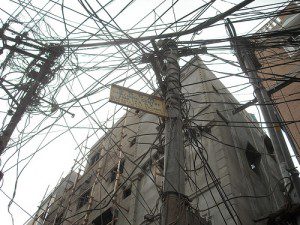 Over two days in late July over 620 million people – about 9% of the world’s population – were left without power after India’s electrical infrastructure failed. These blackouts are dramatic symptoms of India’s dysfunctional political and cultural system, an outdated energy infrastructure and a rapidly expanding demand for power.
Over two days in late July over 620 million people – about 9% of the world’s population – were left without power after India’s electrical infrastructure failed. These blackouts are dramatic symptoms of India’s dysfunctional political and cultural system, an outdated energy infrastructure and a rapidly expanding demand for power.
Demand will continue to skyrocket as currently one-third of India’s households do not have access to the electrical grid. Political dysfunction and cultural attitudes compound the problems when politicians promise cheap electricity to a population already taking it without paying for it. Not only does India have to somehow find a way to supply energy to the incredible growth in demand, but it has to do so by trying to overcome one of the world’s most inefficient systems. India is facing some very serious challenges as it seeks to convince the rest of the world that it is ready to be taken seriously as a viable economic partner.
While the United States has some big issues to address we have always been a nation that understands the importance of a modern, reliable energy infrastructure. The government’s role is to provide investment for improvements to our existing system and fund research to advance technology. Our public investment should be looked at in terms of opportunity as the information-based economy has driven consumer demand over three-fold in the last 50 years.
Public sector investment leads to opportunities in the private sector as new technologies continue to drive innovations in efficiency. Historically there has been resistance against moving to renewable energy sources because they weren’t cost competitive. However, wind and solar are starting to grow as a part of our overall energy production because advancements in technology are starting to close the gap.
Fossil fuels are still overwhelmingly important to our energy needs making up 70% of our energy production. However, natural gas has continued to grow as an important component of our energy production as the amount of energy we generate from oil and gas has diminished over the last two decades. The U.S. has large natural gas reserves and gas is seen as a cleaner option than coal and safer than nuclear.
There are opportunities in the distribution system as well. We are investing in smart grid technology that will fundamentally change the way we receive and use electricity. We have always received electricity into our homes and businesses as a one way street from the power company. Digital technology will allow the consumer to be a part of the grid by supplying usage information back to the utility that will make distribution much more efficient. Renewable sources such as wind and solar also provide an opportunity to decentralize power generation so that it would even be possible for a consumer to sell their excess power back into the grid.
India’s problems provide a stark example of how difficult it is for an economy to function without a reliable energy system. The world is watching and taking notes.
Photo credit: Sistak

